Cambacérès: the new digital district
Cambacérès is the very definition of a connected district. Served by tramway line 1 and the Sud de France TGV train station, Cambacérès also benefits from its close proximity to the Méditerranée airport and A9 motorway. This new business district will be the focal point of the area’s digital ecosystem. Companies and higher education schools will gather around the French Tech Halle building, with its 12,000 sq. meters of space for companies in the digital sector. Designed by Belgian architect Xaveer de Geyter, the new district will also feature 2,000 apartments. A new gateway to the Montpellier Méditerranée Métropole area, the district lies at the intersection of the city and surrounding green zones, framed nobly by renowned vineyards.
New Saint-Roch: a business district in the city center
The New Saint Roch district is the focus of intermodal transportation. Located adjacent to the Saint Roch train station, just a few steps away from Montpellier’s central Place de la Comédie pedestrian zone and downtown area, this emerging district is at the intersection of four tramway lines. Designed by architects Paul Chemetov and Emmanuel Nebout to replace the city’s former freight station, it will feature 1,300 apartments, 30,000 sq. meters of office and shop space, and a 1.3 ha park. The new district will offer the benefits of a dense city in a privileged setting.
Avenue Raymond Dugrand: a major axis
Avenue Raymond Dugrand embodies Montpellier’s expansion towards the sea. This prestigious axis runs within sight of the new City Hall, near the A9 motorway, and at equal distances to Montpellier’s two train stations. Avenue Raymond Dugrand crosses four new districts situated around the Georges Charpak park and Jaques Coeur lagoon: Parc Marianne, Jacques Cœur, Rive Gauche, and République. Office space will be concentrated near the Ernest Granier and Pablo Picasso plazas. Offering an architectural showcase for the city, surrounding facades were designed by Jean Nouvel, Philippe Stark, Jacques Ferrier, Jean-Michel Wilmotte, and Marc Lehmann. Located in the heart of the EcoCité project, Avenue Raymond Dugrand is also dedicated to environmental excellence.
Ode à la Mer: the nature-city
With Ode à la Mer (Ode to the Sea), Montpellier Méditerranée Métropole has undertaken the most ambitious renovation operation for a commercial zone ever seen in France. The project extends along 5 km, seeking to transform aging commercial zones into a series of urban centers, separated from each other by green spaces. With tramway line 3 as its backbone, Ode à la Mer will comprise its own city sanctuary whose rhythm is punctuated by tramway stations. Act 1 of the Ode à le Mer story, to be handled by Pérols-based property developer Antoine Frey, will welcome 70,000 sq. meters of space for shops; 15,000 sq. meters of office and hotel space; and 22,000 sq. meters of space dedicated to leisure and restaurants. The overall goal of Ode à la Mer is to “fix” a 250-hectare area, in which nature will be restored both through landscaping efforts and by reestablishing natural water flows.
Eurêka: the smart city
Located in Castelnau le Lez, on Montpellier’s north side, the Eurêka district lays out a new city space - intergenerational and united - where aging well is a reality. Eurêka covers 40 hectares, expressing diversity in all its forms: urban diversity, with housing, offices, shops, services; city/nature diversity, with green spaces, orchards); and generational diversity.
As part of the EcoCité “From Montpellier to the Sea” initiative, the Eurêka district is equipped with innovative solutions for hydraulic management, energy consumption, and mobility management. The various urban services in this smart city flagship district are coordinated, optimized, and made available to users via a digital platform.
With its roofs entirely covered by photovoltaic solar panels, Eurêka is also Montpellier’s first positive energy district.
Creative City: intense and open
The Creative City project took over Montpellier’s former Infantry School site (EAI), located in the city’s downtown area, leading to the first district dedicated to Cultural and Creative Industries (CCIs). Designed for active young city-dwellers, this diverse district includes 35,000 sq. meters for tertiary and business activities as well as 2,500 apartments. Services will be available for companies in the CCI sector, including a creative third space and shared equipment such as sound and motion capture studios, a projection room, etc. A structural part of the CCI ecosystem, the Creative City will notably welcome the Icônes network, a reference provider of training programs involving cultural and creative industries. A 1,400-student campus featuring four schools will open in 2020, including the Higher School of Artistic Professions (ESMA).
Designed by the Dutch architecture firm West 8, the new district’s identity will leverage existing buildings, including the former military barracks, exercise field, and Montcalm Park, which will become a 20-ha urban park.
Euromédecine: an excellence cluster for the health-biotech sector
Sanofi, Horiba Medical, Deinove, Idenix, C2 Diagnostic, Labover, the new School of Medicine...Universities and many companies, including world leaders and startups, have chosen to set up in the Montpellier’s Euromédecine area, the excellence cluster for the health and biotechnology sectors. Located on Montpellier’s north side, surrounded by research centers, universities, and the university hospital (CHU), the Euromédecine science park offers a world-class scientific environment for companies, schools, and laboratories. Euromédecine also benefits from the momentum generated by competitiveness clusters, including Eurobiomed and Qualiméditerranée.
Montpellier Méditerranée Métropole developed Biopôle Euromédecine, a specific offering for professional space. The complex, comprising three 3,500 sq. meter office centers, caters to the needs of companies and laboratories in the medical sector, by providing adapted, modular, and fully-equipped workspaces.


